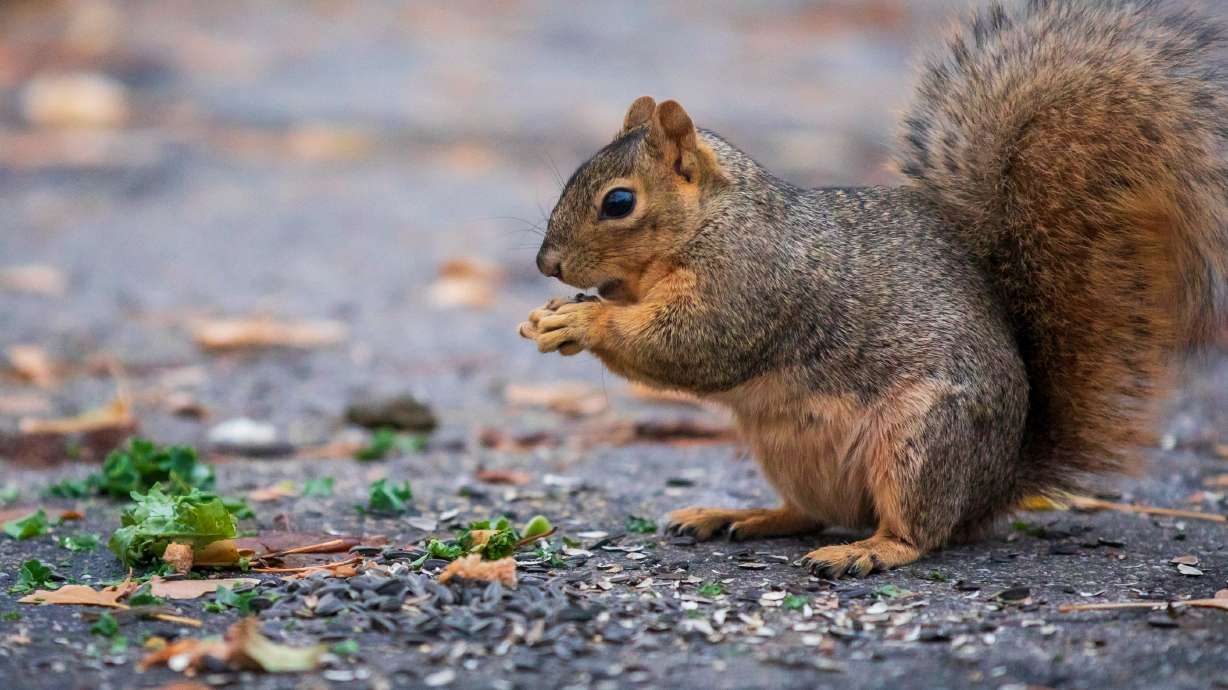Estimated read time: 3-4 minutes
This archived news story is available only for your personal, non-commercial use. Information in the story may be outdated or superseded by additional information. Reading or replaying the story in its archived form does not constitute a republication of the story.
SALT LAKE CITY — A haiku: You eat my bird seed / Even though it's not for you / But I guess you're cute.
Where is Dug from "Up" when you need him? It's officially OK to stop mid-sentence with a declaration of "squirrel!" — and this time, it can be done in the name of science.
Squirrel Fest is happening at the Natural History Museum of Utah from Dec. 2-10, and museum researchers need Utah's help to document where a specific species of squirrels are around the state.
Ellen Eiriksson, the citizen science manager at the Natural History Museum of Utah, said tracking the squirrels around the state is helpful because a species of tree squirrel — eastern fox squirrel — has a growing population in Utah, when it did not previously exist here. Scientists want to track its growth to see what effects the new species has on the ecosystems.
Eiriksson said Utah does not have a typical ecosystem for fox squirrels to choose, yet one was spotted by the Jordan River in 2011 and confirmed by the state. Ever since then, the sightings have skyrocketed, with many sightings in Salt Lake City.
"It's a unique opportunity to be able to observe a nonnative species as it's actively becoming established in a new ecosystem," Eiriksson said.
There are two species of squirrel native to Utah: the American red squirrel and the rock squirrel. Researchers are seeking information about the fox squirrel. The differences between species can be learned on the museum's website, but if you can't tell the difference, that's OK — submit your observation anyway!

To help the museum, researchers ask that the public spend as short as two minutes and up to 15 minutes looking for squirrels. Then, record observations — even observations that no squirrels were seen — on this form. Whether the squirrels are seen grabbing street food in the city, bird seed in the backyard or nuts on a hiking trail, the museum wants it all.
"We could not do this without the help of the public, and so we're incredibly grateful to people who take a minute or two and tell us about squirrels they do or don't see in their own neighborhoods. It really makes a big impact to our research, which is exciting," Eiriksson said.
The survey is open year-round, but the museum hosts Squirrel Fest in December to bring awareness to the public that their help is needed.
Squirrel Fest is on its fourth year, and Eiriksson said it is hosted in December because squirrels are easier to see in trees when the leaves are gone.
The Natural History Museum's website also features how to identify a fox squirrel, and if you relate to the haiku at the beginning, how to shoo them away so they stop eating from bird feeders and bugging pets.
To learn more about Squirrel Fest, check out event information here.










